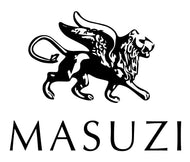How is leather made?
Leather is made by tanning animal skin, which preserves the skin and makes it more durable. Tanning is a process that alters the protein structure of the skin and prevents it from decomposing. Different animal skins, such as cow, deer, and lamb, can be used to make leather. The process of producing leather entails shaving, splitting, re-tanning, and dyeing the skin to achieve the desired thickness, smoothness, firmness and colour[1]

The five key practices of leather-making are cleaning (wet processing), tanning, retanning (prefinishing), milling and finishing. Approximately 99% of hides amd skins used for leather are a by-product from the food industry.[2]
There are different methods of tanning, but the two most common processes are vegetable tanning and chrome tanning.
Here is a general overview of how leather is made using these two methods:
1. Preparation: The process begins with the collection of animal hides or skins, typically sourced from cows, goats, sheep, pigs, or other animals. These hides are obtained from meat processing plants, and it's essential to ensure they are properly preserved and kept free from spoilage until they reach the tannery.
2. Soaking: The hides are soaked in water to rehydrate them and remove any salt or dirt present from the preservation process. This step makes the hides pliable and prepares them for the next stages.
3. Liming: The hides are then treated with lime or a similar alkaline substance. This process helps to remove hair, epidermis, and other proteins from the hide, making it easier to work with in subsequent steps.
4. Fleshing: The hides are mechanically or manually scraped to remove any remaining flesh, fat, or connective tissue from the inner side of the skin.
5. Splitting: Depending on the desired thickness of the leather, the hide might be split into layers. The top layer, which contains the grain side, is used for high-quality leather, while the lower layers are often used for suede or split leather.
Now, the tanning process diverges into two primary methods:
Vegetable Tanning:
6. Tanning: In the traditional vegetable tanning process, the hides are submerged in large wooden vats containing tannins extracted from plant sources, such as tree bark or leaves. The tannins bind with the collagen fibres in the hides, stabilising the material and giving it its characteristic properties.
7. Fatliquoring: After the vegetable tanning process, the leather is treated with natural oils, fats, and waxes to enhance its suppleness and water resistance.
Chrome Tanning:
8. Tanning: In chrome tanning, hides are treated with chromium salts. This method is faster and more economical compared to vegetable tanning. The chromium forms stable cross-links with the collagen fibres, resulting in a more flexible and water-resistant leather.
9. Neutralisation: The hides are neutralised with chemicals to remove excess chromium and adjust the pH levels.
10. Finishing: After tanning, both vegetable-tanned and chrome-tanned leather undergo various finishing processes, which can include dyeing, buffing, embossing, and applying a protective topcoat. These processes give the leather its final appearance and characteristics.

Once the leather is fully processed, it is ready to be used in the production of various goods, such as shoes, bags, belts, garments, and upholstery, among others. If leather is properly tanned and cared for, leather can be a durable and beautiful material with a wide range of applications.
[1] Hellokindster.com
[2] Leathernaturally.org

